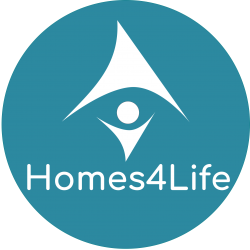Homes4Life Deliverable D2.5 – Innovation Analysis Report – is now available for download.

Executive Summary
Throughout Europe a variety of innovative pilot projects – or ‘experiments’ – are being implemented to improve the life-course resilience of existing and newly built home environments. These experiments reflect the distinct socio-economic context of their locations and, more importantly, they provide a glance into potential future directions for the development of age-friendly homes. It is important to take stock of this diversity in order to get ideas about the range of home environments into which the Homes4Life certification scheme might be introduced and therefore about the flexibility required by the certification scheme when it is deployed throughout Europe.
This report provides an overview of 67 ongoing experiments in the domain of age-friendly housing. By focusing on four countries – the Netherlands, Poland, Ireland and France – we draw more detailed attention to some of these experiments. Overall, we find that, besides the variation between these countries, there is a more important type variation in terms of differences in the character of these experiments and the directions proposed by these experiments. Most of the associated innovations tested in age-friendly home experiments are not primarily material or technical, but primarily social or conceptual in character (i.e. new organisational or everyday practices that re-arrange social relations or new housing concepts that bridge the divide between ageing in place individually and a nursing home). This variety of innovations tested in the experiments has been categorized into seven distinct innovation pathways: (1) Showcasing Technology, (2) Innovation Ecosystem, (3) Sheltered Elite, (4) Specific Community, (5) Conscious Retrofitting, (6) Home Sharing and (7) Retrovation Challenge.
The array of experiments and future directions identified in this report provides insights into the different kinds of home environments that the Homes4Life certification scheme could encounter when made operational. Specifically, we highlights that in the development and application of the Homes4Life certification scheme, special attention to be paid to the following: (1) making the scheme flexible enough to assess the wide variety of innovative home environments that are part of very different innovation pathways; (2) dealing with potential misalignments between certain radical innovations and the application of a certification scheme; (3) formulating a communication strategy to articulate to added value of the certification scheme to innovators involved in experiments.

